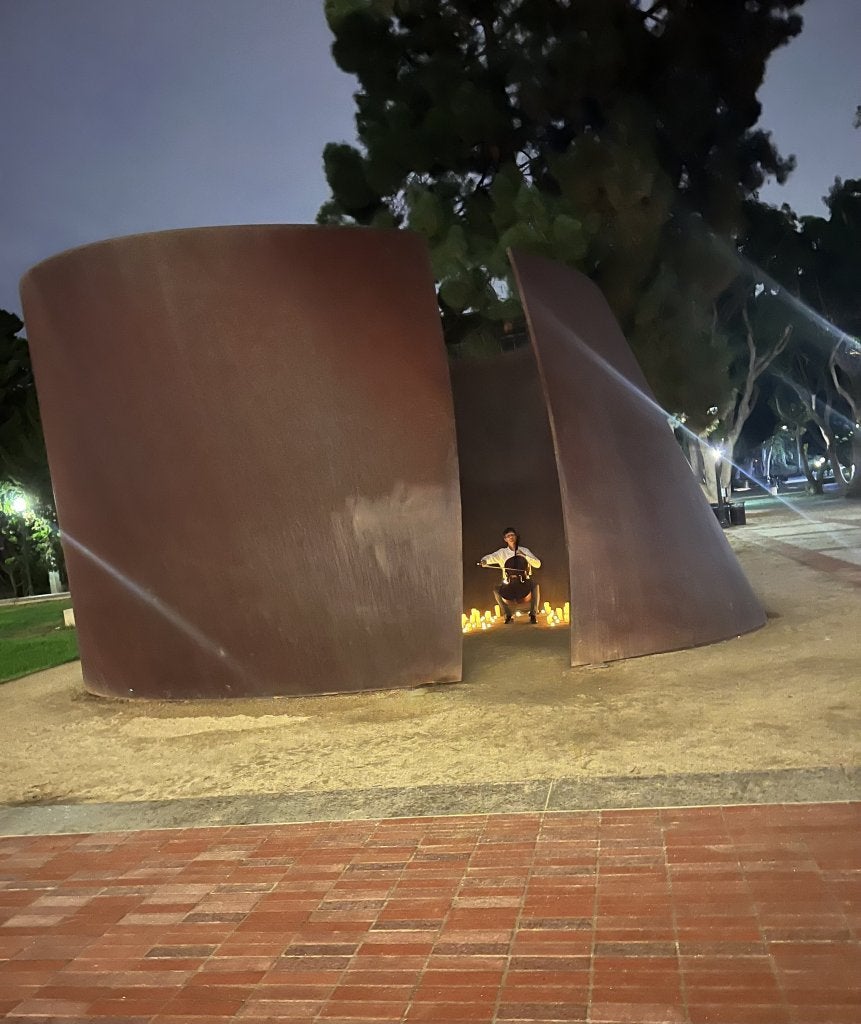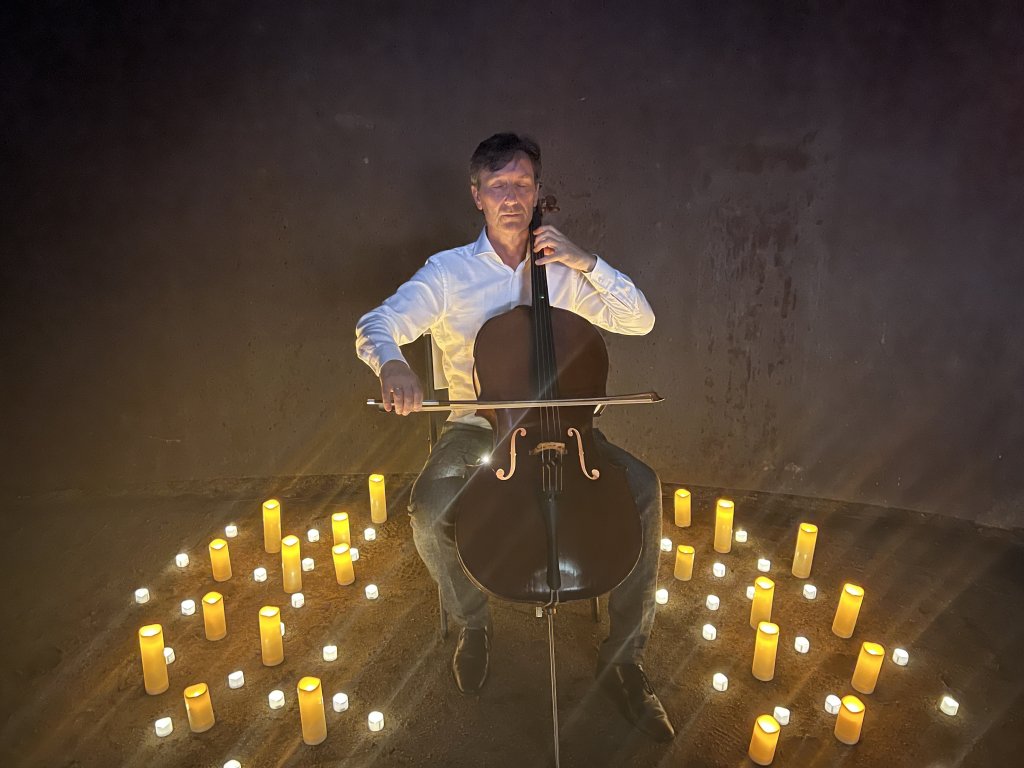By Fia Darroch, guest contributor
On the evening of September 23, 2022, visitors to UCLA’s Franklin D. Murphy Sculpture Garden will experience an unusual shift in atmosphere. Internationally renowned cellist Antonio Lysy will perform J.S. Bach’s six suites for solo cello inside a monolithic steel artwork sculpture by Richard Serra, the T.E.U.C.L.A. (Torqued Ellipse).
This fusion of eighteenth-century music with minimalist contemporary visual art is a juxtaposition of art forms, meant to enhance the viewer’s experience of both. The Franklin D. Murphy sculpture garden is a place for both repose and scrutiny, where eyes, ears, and minds wander freely, enriching the inquisitive nature of learning. On the evening of September 23, passers-by will be encouraged to stop and experience Bach’s intimate confessions, to enter Serra’s sculpture while Lysy plays, to listen from outside the sculpture, or to view from the balcony of the Broad Art Center.
The concept for this performance came out of necessity during the pandemic, during which time practice rooms, classrooms, and performance halls at UCLA were closed. Lysy, who is a professor of cello performance at The UCLA Herb Alpert School of Music, suggested to his master’s cello students that they bring their instruments inside the Serra sculpture to experience its favorable acoustics and find inspiration. Lysy himself has always been an advocate of pushing performances beyond the proverbial stage, to extend the reach of classical music by re-contextualizing it and stimulating a fresh perspective.

“Live music can, should, and must be experienced in diverse ways to reawaken the senses,” said Lysy. “Classical music is often chained to purist codes of behavior because of its hallowed status and traditions. Add to that the rapid proliferation of recorded and filmed performances, which for many has reached a point of saturation.” Lysy continues to emphasize the commercial angle of these traditions, focused on selling theatre tickets and thus confining classical music to the specially-built concert hall.
Bach composed his cello suites approximately three hundred years ago. Profoundly devoted to the church, Bach’s work became influenced by Lutheran reforms that increased his awareness of the power of communicating spiritually and accessibly to an entire congregation through music. Among the first series of pieces written for the cello alone, the suites are distinctive as being some of the first compositions that Bach wrote for a secular audience. “Music appeals to intellect and passions,” wrote Martin Luther. It is a deceptively simple statement for a complex truth that underlies Bach’s works as a composer, said by many to manifest the mind, the body, and the soul.
Commissioned by Eli Broad and installed in 2006, the T.E.U.C.L.A. by innovative and distinguished American sculptor Richard Serra stands out in The Franklin D. Murphy sculpture garden among artists such as Henry Moore, Auguste Rodin, and Alexander Calder. Formidable in its visage, the sculpture can be entered and explored as a space of its own. Its sheer size and elegant design compel investigation of its shape and form. Once inside this seemingly simple structure, it activates a transmutable power to redirect time, space, and the context of those who interact with it.
The sculpture incorporates the viewer, the curvature of the towering steel plate acting as a placeholder to delineate the space one can move inside of and around. Time and space stand reliant on the viewer’s focus and desire to remain inside the resonant space, its inner walls allowing for vibrations of the sounds within to be amplified while muffling the noises of the urban bustle outside. The cello, a resonant body of its own, enhances this effect once inside the sculpture. With an irregular cone-like shape, the T.E U.C.L.A. acts as an amplifier, releasing Bach’s suites into the surrounding garden.
Richard Serra’s own artistic intentions explore the physical boundaries of his materials relating to the specific site in which they were installed. These pieces place, as Serra himself explained, “the responsibility of the content on how willing [a] person is to engage with themselves and time and space and what’s in front of them.” This ambition to “extend the language of Art”, lies at the crux of inspired creativity, and is the original stimulus for Antonio Lysy’s programming.
“This is an opportunity to connect music and sculpture where both the audience and the artist performing can experience heightened levels of listening and concentration,” said Lysy. On September 23, sound will expand the artful dimensions of the Franklin D. Murphy sculpture garden, providing an opportunity for an individualized, unique experience.
Bach in the Serra: Friday, September 23, 7:00 p.m., Franklin D. Murphy Sculpture Garden. This event is free and open to the public, and will be livestreamed.
Fia Darroch is an art curator and writer. She lives in Toronto, Canada.
